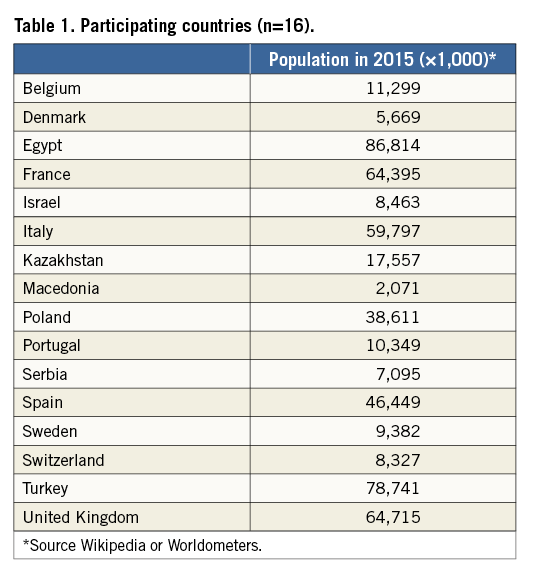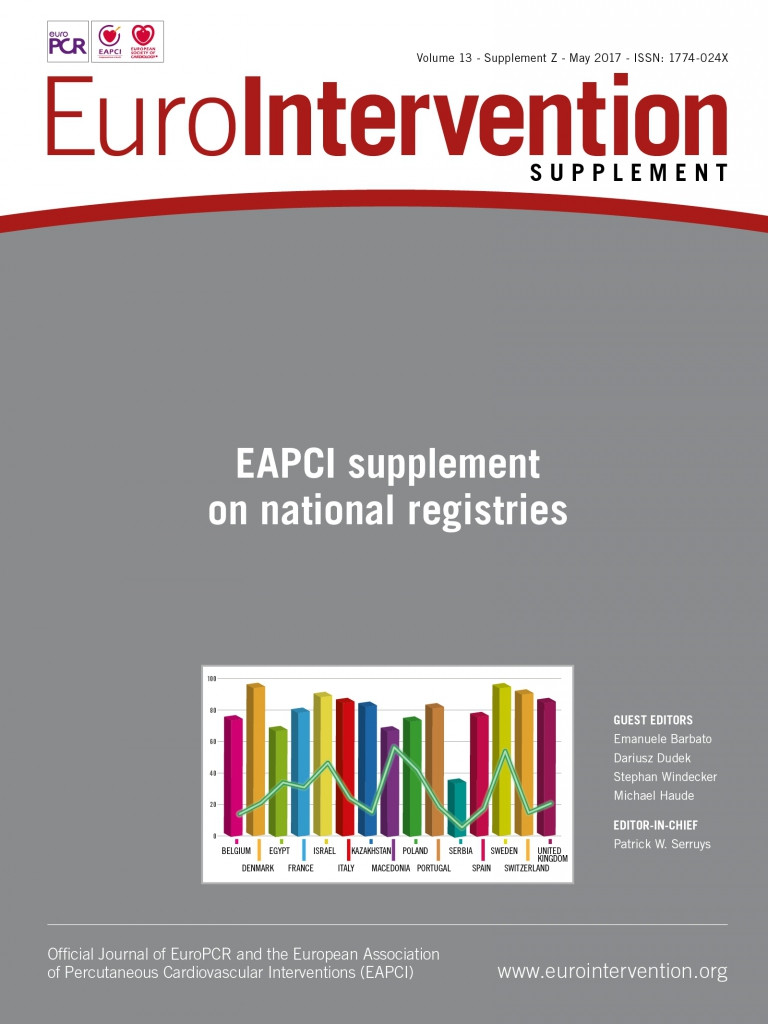At the 3rd EAPCI Summit (Nice, March 2015), entitled “Mapping the interventional cardiology in Europe”, delegates representing 29 European National Interventional Cardiac Societies participated1. The summit was dedicated to reactivating a systematic and regular survey on interventional cardiology practice in the countries of the European Society of Cardiology (ESC). This survey is in fact critically important to: a) monitor the heterogeneity in practices among the participating countries; b) disclose obstacles to guideline implementation; and c) record dynamics of harmonisation in interventional cardiology practices. At the conclusion, the delegates reached a consensus that the regular monitoring of interventional cardiology practice represents a priority and one of the missions of the EAPCI. The retrospective collection of some key data concerning interventional cardiology over the past five years was one of the important action points in the conclusions of the Summit. Consequently, all the ESC countries and affiliates were invited to participate in the retrospective EAPCI registry in the weeks after the Summit. We are proud to announce in this issue of EuroIntervention the retrospective EAPCI registries of the 16 countries that agreed to participate (Table 1). The countries monitored provide a good geographical representation of the different European regions as well as in terms of demographics (ranging from countries of two to 80 million inhabitants).

The authors of the related manuscripts should be commended for the terrific work in retrospectively collecting data spanning from 2010 until 20152-17, especially considering that only a few participating countries had well-structured patient-level data collection at the time of the survey. The registries presented are based on aggregated survey data from 15 ESC member countries and one affiliated ESC country. The national contact person of each participating country was requested to complete a self-administered questionnaire providing some general information on matters of demographics and organisation, and data on percutaneous coronary procedures and structural heart interventions. It was beyond the scope of this call for data collection to perform external audits or quality control of the reported metrics, let alone comparative analysis among the countries. We believed in fact that monitoring trends rather than absolute values would be equally effective in providing an overview of European interventional cardiology practice from 2010 to 2015. These trends are reported in this issue separately for coronary and structural heart interventions18,19. We leave it up to the reader to dive deeply into the details of each and every country. We are confident that this retrospective snapshot will serve as a foundation for a prospective, regular and systematic data collection.
Conflict of interest statement
The authors have no conflicts of interest to declare.

